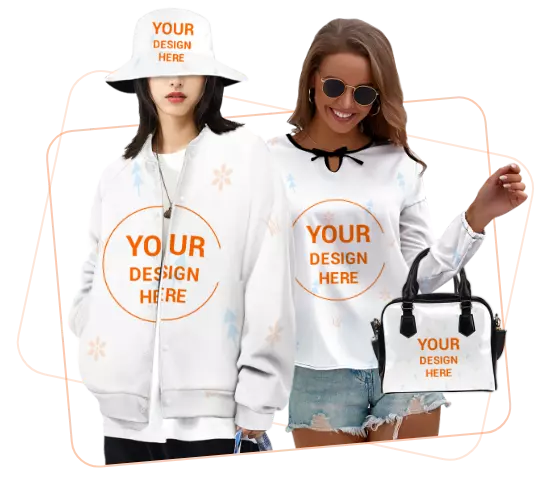
The Complete AI Design Playbook for Print-on-Demand in 2025: From Tools to Concepts
As we move through 2025, artificial intelligence is no longer a future trend in the print-on-demand (POD) industry—it is the most powerful core driver of the present. For entrepreneurs hoping to stand out from the competition, mastering AI tools and strategies is the key to achieving efficient creation, precise marketing, and scalable success. This article provides a complete, practical guide to AI design.
What AI Tool Types are Essential for Print-on-Demand?
In the vast ecosystem of AI tools, POD sellers should focus on three specific types that correspond to the core stages of the business, from product development to market promotion. Intelligently combining these tools will build a solid technological foundation for your business.
AI Image Generators for Creativity
This is the engine of the entire creative process, capable of transforming text descriptions into unique visual designs. The technology has matured to the point where it can create almost anything, from simple icons to complex, surrealist paintings.
For print-on-demand, this means you can instantly generate designs suitable for t-shirts, posters, phone cases, and more, dramatically lowering the barrier to entry and the time cost of creation.
AI Market Analysis Tools for Insight
A successful POD business isn't just about beautiful designs; it's about an accurate grasp of market demand. By analyzing massive amounts of data from social media, e-commerce platforms, and search engines, these AI tools help you discover emerging niches, popular design themes, trending color palettes, and crucial keywords.
They shift your decision-making from "I guess" to "I know," allowing you to position your products ahead of a trend before it peaks.
AI Copywriting Assistants for Sales
Even the best design needs excellent copy to enhance and promote it. AI copywriting tools can quickly generate persuasive product titles, imaginative descriptions, and keyword layouts optimized for SEO.
Furthermore, they can draft social media ad copy, email marketing campaigns, and more, helping you communicate with potential customers in a more professional and efficient manner to increase conversion rates.
How Do You Configure AI for Optimal Design Results?
To make AI your most effective design partner, simply inputting a few words is not enough. The core of "setting up the AI" lies in learning how to give precise, guiding instructions, a practice known as "Prompt Engineering." A well-structured prompt can turn an AI's output from "random" to "controlled."
The Art of Prompt Engineering
An effective prompt usually contains several key components. The subject description is the foundation, such as "a cat wearing a spacesuit." But to achieve high-quality designs, you need to add more modifiers to guide the AI with extreme clarity.
Key Prompt Components
For truly professional results, your prompts should include specific directives. This includes Style Directives (e.g., "watercolor style," "cyberpunk style," "minimalist line art"), Composition and Angle (e.g., "close-up shot," "wide-angle view"), and Lighting and Color (e.g., "soft light at dusk," "cinematic tones under neon lights").
Advanced Prompting with Negative Prompts
To further refine your output, use Negative Prompts to tell the AI what you don't want to see in the image, such as "no text," "avoid blurry details," or "no background."
For instance, an optimized prompt could be: "A happy Corgi wearing aviator goggles, sitting in the passenger seat of a vintage convertible car, cartoon movie style, vibrant colors, sunny day, close-up shot, high-quality details." This level of detail guides the AI's creative power precisely where you want it.
What are the Most Effective AI-Assisted Design Methods?
In 2025, top-tier POD sellers are not using a "one-click generation" model. Instead, they are adopting a highly efficient, human-machine collaborative design method that combines the best of AI's speed with human aesthetic judgment.
Rapid Concept Generation
When you have a vague idea, you can have the AI quickly generate a dozen different visual schemes. This allows you to select the most promising options as a basis for further creation, dramatically accelerating the brainstorming and creative validation process.
Seamless Pattern Creation
For products like pillows, rugs, or phone cases, seamless patterns are crucial. Many AI tools can now directly generate high-quality seamless textures. You can enter prompts like "vintage floral pattern, art deco style, seamless tile" to quickly obtain design assets that can be used for all-over prints.

Iterative Refinement with Image-to-Image
This advanced technique allows you to upload a preliminary sketch or an existing AI-generated image and use text prompts to request modifications. For example, you could ask the AI to "colorize this sketch in the style of Van Gogh" or "improve the detail and resolution of this image" to achieve design iteration and refinement.
The Hybrid Human-AI Workflow
The most critical step is manual post-processing. Importing the AI's output into traditional design software for final adjustments, text additions, and formatting is an essential step to ensure professionalism and originality. This hybrid workflow lets you enjoy the efficiency of AI while retaining the soul of human creation.
How Can You Develop Bestselling Print-on-Demand Concepts with AI?
Great design ideas don't come from a vacuum; they originate from a deep understanding of the market. AI provides us with a shortcut to mine for creative gold within data, making the process of developing design concepts far more scientific.
Data-Driven Niche Discovery
The workflow begins with AI trend analysis tools. These platforms help you find blue ocean markets where demand is growing but competition is not yet fierce. For example, data might show that searches for "Goblincore aesthetic" or "nostalgic Y2K style" are climbing globally.
Thematic Keyword Brainstorming
Once you've identified a promising market, the next step is to brainstorm relevant keywords. For the "Goblincore" example, keywords might include: mushrooms, snails, frogs, ferns, moss, magic forest, and vintage botanical illustrations. This list becomes the "language" you use to communicate with the AI.
AI-Powered Visual Exploration
Next, combine these keywords and style directives in an AI image generator to explore visual concepts. You can try different combinations, such as "a frog wearing a small hat sitting on a mushroom, vintage storybook illustration style." The AI will present you with countless visual possibilities based on your data-informed themes.
Integrated Production with Inkedjoy
After obtaining satisfactory designs, you can use a POD platform like Inkedjoy to quickly apply them to a range of products. Use an AI copywriter to generate compelling descriptions, completing the closed loop from data insight to creative generation to product launch. This process ensures your ideas are always aligned with the market, increasing the odds of creating a bestseller.
Intelligent Creation, Infinite Opportunity
In summary, the secret to print-on-demand success in 2025 lies in seamlessly integrating AI into your workflow. From recommended tool types and precise settings to efficient design methods and data-driven creative concepts, AI offers unprecedented empowerment for entrepreneurs. Embrace this new model of human-machine collaboration, and your creativity will be transformed into infinite business opportunities.



